Inbound Marketing
How to measure return on investment (ROI) in education marketing

Lourdes Calderón
Lourdes Calderón | Oct 24, 2025 | 6 MIN READ
Oct 24, 2025 6 MIN READ

In the competitive world of education, institutions can no longer rely solely on prestige or reputation to attract students. Marketing teams are increasingly investing indigital campaigns, social media, automation, and CRM, but... how do you know if all that effort is really paying off?
Measuring return on investment (ROI) in education marketing is the key to making data-driven strategic decisions. It's not just about justifying your budget, but also about optimizing resources to increase admissions, retain students and strengthen your institutional brand.
Here's how to calculate and improve the ROI of your education marketing efforts, with a clear approach andpracticaltoolsthat will help you demonstrate the true impact of your strategies.
What is ROI in education marketing?
The ROI (Return on Investment) measures the relationship between the income obtained and the investment made. In education, this concept takes on a special nuance: the "return" does not always translate directly into money, but into new enrollments, qualified leads or greater institutional recognition.
For example, if a digital campaign costs $1,000 and generates enrollments equivalent to $3,000 in revenue, the ROI would be 200%.
However, in education, measurement is not limited to numbers. You need to consider the long decision cycle of students, interactions with parents or guardians, and the mix of channels that influence conversion.
Challenges of measuring ROI in educational institutions
Unlike other industries, educational institutions face unique challenges in measuring the impact of their marketing:
-
Extended decision cycle: a student can take months (or even a year) from first contact to enrollment.
-
Multiple stakeholders: parents, counselors, teachers and students all influence the final decision.
-
Varied conversion sources: the student's journey includes social networks, Google searches, trade shows, e-mails, webinars, etc.
-
Difficulty of attribution: without a CRM or integrated system, it is almost impossible to know which channel each enrollment comes from.
Therefore, institutions need a comprehensive measurement strategy, combining technology, data and a results-based marketing approach.
Benefits of measuring ROI in education marketing
Implementing accurate ROI measurement not only improves campaign efficiency, but also brings strategic advantages:
-
Budget optimization: allows you to invest more in the best performing channels.
-
Data-driven decision making: assumptions are replaced by concrete metrics.
-
Better alignment between marketing and admissions: both teams work on common objectives.
-
Scalability: knowing ROI helps to replicate successful campaigns and reduce unnecessary efforts.
-
Institutional transparency: authorities can clearly see the impact of marketing actions.
Tools to measure the ROI of marketing in education
The good news is that there are technological tools that facilitate this process. Some of the most useful are:
HubSpot CRM
HubSpot allows you to track every interaction from first click to enrollment, integrating data from campaigns, forms, mailings and admissions CRM.
With its custom reporting module, you can visualizethe ROI of each channel (Google Ads, social media, email, etc.) and determine which tactics generate the most conversions.
Google Analytics 4
Ideal for measuring traffic, acquisition sources and user behavior. Allows you to connect specific conversions such as form submissions or visits to key admissions pages.
Automation and analytics platforms
Tools such as HubSpot Marketing Hub, ActiveCampaign or Pardot help track the complete lead journey, automating processes and calculating ROI per campaign.
Integration with financial systems
Connecting the CRM with the ERP or billing system allows you to calculate real revenue from each campaign and measure ROI accurately.
How to implement a step-by-step ROI measurement system
Measuring ROI doesn't happen overnight. It requires structure and an iterative approach.
Here's a step-by-step process:
Step 1: Define your goals.
Before launching any campaign, set clear goals: do you want more inquiries, more leads, or more website visits?
Step 2: Identify your KPIs
Select the most relevant metrics for each objective: CPL, CPA, conversion rate, etc.
Step 3: Configure your technology ecosystem
Make sure your website, forms, CRM and advertising tools are properly integrated.
With HubSpot, for example, you can connect forms on your website with workflows that automatically record each lead.
Step 4: Correctly Attribute Conversions
Implement attribution models (first click, last click or multi-channel) to understand how each touch point contributes to an enrollment.
Step 5: Analyze and optimize
Review results on a monthly basis. Identify the most profitable channels and redistribute budget to them.
Step 6: Communicate results
Create visual reports for managers or admissions teams to understand the impact of digital marketing.
Practical example of ROI in education marketing
Suppose a university invests $10,000 in a digital admissions campaign.
-
It generates 500 leads (CPL = $20).
-
Of those, 50 enroll (10% conversion rate).
-
The average revenue per student is $2,000.
Then:
-
Total revenue: 50 x $2,000 = $100,000.
-
ROI: ($100,000 - $10,000) / $10,000 x 100 = 900%.
This type of analysis clearly demonstrates the economic impact of educational marketing.
Common mistakes in measuring ROI
Even the most advanced institutions make mistakes when measuring their return. Some of the most frequent are:
-
Not defining clear objectives from the start.
-
Using disconnected tools (no centralized CRM).
-
Ignoring the value of the internal team's time and effort.
-
Measuring only "likes" or clicks, without linking them to real results.
-
Failing to follow up on leads throughout the intake cycle.
Avoiding these mistakes is as important as calculating metrics correctly.
How HubSpot helps measure and improve educational ROI
As a HubSpot partner, we recommend this platform because it offers a complete view of the student journey.
With HubSpot you can:
-
Integrate website, forms and CRM into one system.
-
Track the exact origin of each lead.
-
Automate tracking and nurturing by channel.
-
Calculate real-time ROI with customized dashboards.
-
Coordinate marketing and admissions teams to increase conversions.
In addition, HubSpot allows you to connect data from Google, social media and email campaigns, providing a 360° view of performance.
Conclusion: ROI as a compass for education marketing
Measuring ROI is not just about justifying an investment. It is a strategic tool that allows you to grow sustainably, better understand students and improve every touch point in the admissions process.
Institutions that embrace a data-driven culture are able to optimize their budgets, attract more qualified students and make smarter decisions.
The education marketing of the future will be more measurable, automated and connected - and starting by measuring ROI is the first step toward that transformation.
TABLE OF CONTENTS
Stay Updated with Our
Latest Posts
Subscribe now to receive the freshest content, insights, and updates directly in your inbox.

Recent Articles


2024 © The Orange Box Agency – All rights reserved



.png?width=90&height=90&name=facebook%20(1).png)
.png?width=94&height=96&name=Vector%20(1).png)